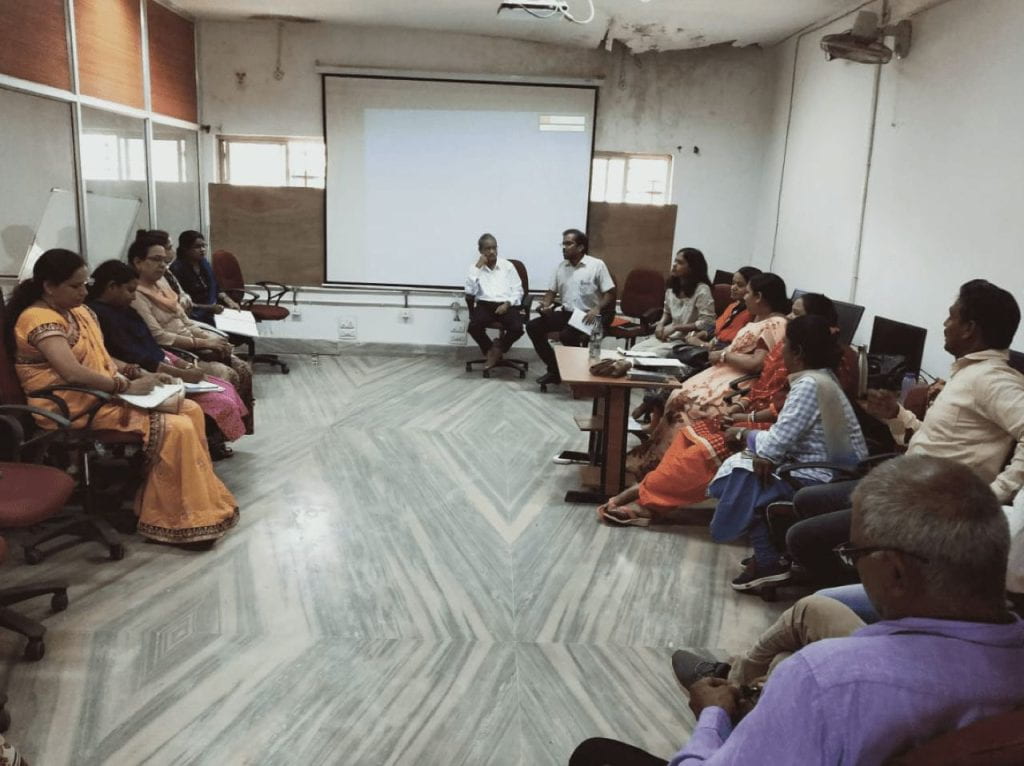Guest blog written by Nikhilesh Hari, Poona Verma, Sadashiv N., Vijay Siddharth Pillai
This is a team of four development practitioners working for the PMRDF in India and an M.Phil student in the UK. They successfully completed the 15-week Practice of PDIA online course that ended in May 2019. This is their story.

We began the course with a feeling that the approach which we are going to learn is going to be unique. As we progressed through the initial weeks, we realized that it’s a common sensical approach to solve problems. However we realized that the common sensical approach is rarely followed. We also realized while operationalizing the approach that it is not easy at all and requires a lot of perseverance.
Some of the key takeaways from this course are:
- Problems require a contextual understanding of the reality. The group which is engaged in solving the problem should know why does it matter to solve the problem for themselves as well as the authorizers. They should also so be clear about what would a state where the problem is solved look like.
- The group dynamics in the team should be such that the focus should be on the group processes and not individuals. The environment should be such that storming phase is allowed and is followed by the norming and performing stages.
- A shared understanding of root causes of the problem is to be obtained with the help of a fish bone diagram. The problem needs to be analyzed in depth by successively using the “why” question.
- AAA analysis of the sub problems shall help us understand where there is an overlap of authority, acceptance and ability spheres. Where there is such overlap, intervention to tackle the problem can be taken. If no overlap, then activities to enhance the 3 spheres so as to obtain overlap in future needs to be taken.
- Positive deviations could be sourced in multiple ways ranging from local best practice, Kaizen practices, global best practices etc.
- One has to be incremental with periodic sharing of learnings. This not only improves authorization for successive intervention but also keeps the group on the same page improving the capacity of the team to solve the problem.
- It is important to have quick wins. The states capacity to solve the problem comes with the struggle. Any attempt to bypass the struggle does not lead to any sustainable change nor does it create the desired folk culture within the organization to drive the change.
- While we had relatively less time to work on our problem on the field we realized that the field agents had been socialized into subservience. They had a passive approach to solving the problem and were frequently expressing willingness to implement whatever we “ordered” them to do in the classroom. At the same time, there was lack of appreciation of the fact that part of problem could be solved by changing their own instructional habits in the classroom. PDIA approach to solving problems is challenging in situations where there never has been a culture of participative decision making. We also realized that AAA analysis can only be done among agents to whom we have access. We found that there were important stakeholders such as the education secretary to whom we did not have access.

The course has taught us to dig deep into the problem asking 5 Whys. Next important is 3A’s – Acceptance, Ability and Authority. We need to maneuver between teachers, District Magistrate, District Education Officer and other Education Department resources taking into cognizance the 3 A’s and balancing them. We would also try to find multiple solutions to our problem on the ground and apply the one that fits perfectly according to the given context and get continuous feedbacks and make course corrections wherever needed.
Post the course, we will apply the PDIA techniques within Bastar district with the following timeline:
- Three day workshop of district team in the first week of June. The workshop will include chalking out a program for child centric teaching approach and drafting lesson plans using Bloom’s taxonomy.
- In the first week of July, block level training (all 7 Blocks) for all the science teachers of the district would be conducted. Strategy developed in June workshop will be implemented during the training.
- Professional Learning Community (PLC) meetings will commence from fourth Saturday of June. They will run for entire year maintaining the continuity and monitoring required for the project to be successful.
To learn more, visit our website or download the PDIAtoolkit (available in English and Spanish) or listen to our podcast.